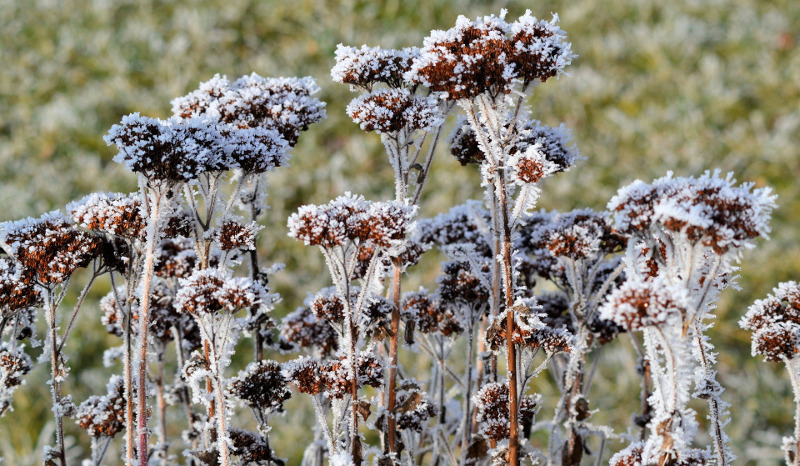Sedums are a succulent plant that grows well in zones 3 to 9. Succulents are known for retaining water in its leaves, which makes sedum one of the hardiest succulents out there. Sedums can tolerate heat, dry soil, and cold weather conditions. Unlike most perennials, sedum will not require a lot of care over the winter.

As you prepare and prune your garden area for winter, sedums can be left unattended to. Sedums are hardy, tolerating frost and below freezing temperatures. Upright sedums will die back to the ground, but the remaining stalks with spent flowers will offer color and food for the birds. If you wish, you can prune the stalks to the ground. It will not harm the plant or the spring’s new growth.
Cutting Back Sedum For Winter
Pruning sedum in the fall is optional. Some find the plant attractive during the winter months. Pinching back the plant can be done to control the spread or size of the plant. If the sedum is diseased, you will want to cut it to the ground and discard any of the clippings. It will grow back in the spring.
Clumping sedums grow taller and have clusters of flowers that change color in the fall. If you want to enjoy the colors of the flowers over the winter, then leave them be. In the spring, cut the stalks to the ground to encourage new growth.
Creeping sedum grows lower to the ground. If the plant looks overgrown and loses its shape, you can prune it to promote next year’s growth. Snip the dead stems and flowers down to the ground.

Sedum Winter Care in Pots
Most sedum varieties are very hardy and can withstand the harsh winters. Depending on the material of the container, potted sedums can remain outdoors all winter. Ceramic or terracotta pots will crack under colder conditions, so we recommend using our resin containers. Place the pot in a sheltered area near a building for the winter.
It is best for the plant to stay frozen and dormant during the cold and rebloom in the spring. Do not store the container in a sunny area. This can cause a thaw/freeze cycle which is not healthy for the roots. You can add protection to the roots of the sedum by wrapping the pot in burlap, burying the pot in the ground, or allowing snow to cover the container.
Watering Sedum in Winter
Once the growing season is complete, watering of the sedum should stop. Sedums like dry soil. Too much moisture can cause winter rot. A covering of snow will help to protect the sedum, but continuous precipitation and standing water is not good for the plant.
If it is an unusually dry winter, you should water just enough so the soil is not completely dried out. Potted sedum will need more water than the in ground plants.

Growing Sedum Indoors
Sedums go dormant for the winter, and will survive outdoors in the brutal cold. It is possible for you to bring your container sedum indoors for the winter, but don’t expect blooming, as it is a dormant time. Sedum will still need 3-4 hours of sun each day and an occasional watering.
Tips to Care For Sedum in Winter
Sedums are very hardy succulent plants that can tolerate the cold winters. Rather than over care for them and cause damage, it is oftentimes, better to forget about them during the winter.
- Pruning is optional.
- Reduce watering. Water only if the soil is very dry.
- Potted sedums need a bit more watering.
- Too much moisture can cause root rot.
- Potted sedums will survive indoors or outdoors.
- Prune in the spring to encourage new growth.
 |
Author Chris Link - Published 01-28-2021 |
